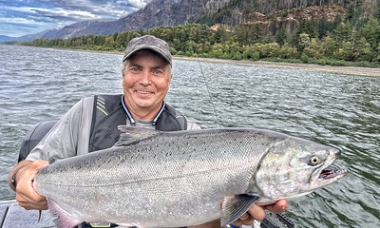
Search myodfw.com


Wenaha Wildlife Area, near Troy, OR 45°56'46.3"N 117°26'12.7"W







Glen Otto Park - 1102 E Historic Columbia River Hwy. Troutdale, 97060
Nick Myatt, Region Manager Golden eagle research in northeast District wildlife staff in Wallowa County, in partnership with the U.S. Fish and Wildlife Service and the Nature Conservancy, began a pilot project to study the survival, movement, and reproductive success of golden eagles. During the pilot phase, ODFW staff tested methods of capture as well as telemetry units to determine feasibility for a longer-term study. The first capture event during this pilot project took place in mid-December 2024. USFWS provided four GPS units for this pilot year. The data from golden eagles captured in northeast Oregon during this pilot phase


Chris Kern, Region Manager Fisher research in southern Oregon Fisher are a Species of Greatest Conservaion Need in Oregon's State Wildlife Action Plan, and ODFW is actively conducting research to understand fisher occupancy and distribution east of I-5, as well as that of their competitors and predators. Wildlife Research staff maintained 30 baited camera traps in the Cascade-Siskiyou National Monument and Southern Cascades. The cameras were deployed in mid-September on U.S. Forest Service and Bureau of Land Management lands in areas with proposed habitat management efforts. The goal is to evaluate how these land alterations influence changes in mesocarnivore occupancy

Captain Casey Thomas, Fish & Wildlife Division An Oregon State Police Fish and Wildlife Trooper received multiple complaints about an owl hanging from a power line. The barn owl had become tangled in fishing line, which was hanging from a power line, about 20 yards from a bridge that crosses the Lost River. A local raptor rehabilitator told the Trooper that unlike eagles, Owls can't swim. A local Pacific Power employee had a boom truck and offered to help. Using the Troopers net, he was able to safely cut the owl down. The owl received some treatment at a local

Tucker Jones, Ocean Salmon and Columbia River Program Manager Summary of 2024 Fisheries and Outlook for 2025 Fisheries The Columbia River Management section of OSCRP has posted a document to the ODFW website with preliminary estimates of 2024 salmon returns and fishery results, 2025 run forecasts for spring Chinook, summer Chinook, and sockeye salmon, as well as a list of currently-known key dates for 2025 fisheries planning milestones. This document is prepared jointly by the ODFW and WDFW Columbia River fishery management staffs each year. This useful document has a table of salmonid returns/forecasts that will be updated on our

